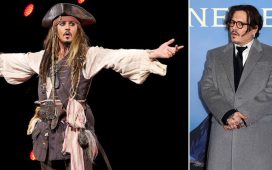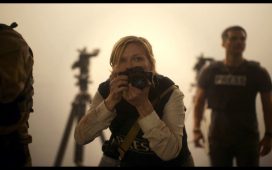Crip Camp, Netflix’s feelgood documentary executive-produced by the Obamas, begins out of the spotlight: at a hippy summer camp in the early 1970s called Camp Jened in which teens hang out, hook up and mess around in the mountains adjacent, both physically and spiritually, to Woodstock. The campers at Jened, however, are all disabled teens, and Jened offers a rare utopia of what a world centered on their perspective could be. The camp’s radical vision, it turns out, has shaped decades of activism; the film, which premiered to rave reviews at Sundance in January, traces the long arc of Jened’s foundational influence for a generation of civil rights activists, as many ex-Jenedians fought in the oft-underplayed story of the disability rights movement in America.
The idea for a film on Jened began with an off-hand comment at lunch. Jim LeBrecht, an award-winning sound designer for film and theater based in Oakland, California, had worked on several documentaries, including three films over the course of 15 years with Nicole Newnham as co-director. But LeBrecht, who was born with spina bifida and uses a wheelchair, had never seen one related to his life’s work as a disability rights advocate. At the end of one lunch pitch meeting, he mentioned: “‘You know, I’ve always wanted to see this film made about my summer camp,’” Newnham recalled to the Guardian. “And I said, ‘Oh, that’s nice, why?’ And then he completely blew my mind.”
Camp Jened, which LeBrecht attended at the age of 15 in 1971, offered disabled teens a sense of normalcy often not found at home. Everyone had some bodily concern or limitation, so no one was the stigmatized odd one out. The world, for once, did not assume an able-bodied perspective. A product of late 60s radicalism, the camp was a melting pot of liberation: formative conversations on not being heard and finding your voice, baseball games and folk singalongs, furtive makeouts in dark corners.
LeBrecht had always sensed that Jened played an outsize role in the disability rights movement of the late 70s and 80s, “and that’s the one that we traced because we really wanted to bring people into this history, this group of friends, this almost Breakfast Club-like feeling of watching a group of people come together across difference and recognize their commonalities and see the power in that”, said Newnham. “We chose to look at what was the rippling out of this particular place, and how does that play a role in the movement that came later.”
In the beginning, that ripple effect was just “a theory for us”, said Newnham. First, they had to find evidence. The two began outreach from a Facebook page LeBrecht sent Newnham on which Jened alums had posted photos and memories for years. And the film-makers called up Judy Heumann, a polio survivor and disability rights crusader who served as special adviser for international disability rights at the US Department of State under Barack Obama and worked as a counselor at Jened in her early 20s. She, too, remembered Jened’s powerful role in shaping her and her friends’ politics and purpose. “‘This camp is where we had those conversations in the bunks late at night that made us realize, hey, there’s this civil rights movement going on around us, why aren’t we a part of it?’” Newnham recalled her saying. “Or, ‘Hey, you know, this is actually oppression that we’re all experiencing,’ because it wasn’t just one person’s burden or story any more, it was a community story.”

But the real breakthrough came when LeBrecht remembered a “radical, early video coalition of hippies” who stopped by the camp in the summer of 1971, strapped a camera to his wheelchair, and directed him to film. LeBrecht and Newnham tracked down Howard Gutstadt of the People’s Video Theater, an experimental film-making group from the 70s who embedded in New York’s first women’s liberation march, the first gay pride march and a day in the life of Camp Jened. Gutstadt, who happened to live a few miles away in Berkeley, was in the process of digitizing the group’s five and a half hours of footage from the camp, which now composes most of Crip Camp’s first third.
The incredible footage captures the camp’s network of interdependence and freedom – a coalition of able-bodied and disabled people swimming together, or organizing dishes and chores; a 15-year-old LeBrecht laments his separation from his first girlfriend on their one-week anniversary, because of a crabs outbreak in the camp. One extraordinary scene confirms Heumann’s memories of formative discussions: campers sit around a table discussing overprotective parents, their frustrations and their ambitions.
Watching the footage, LeBrecht said, it’s “impossible to kind of find the right words for it – it’s very bittersweet and exciting, and it literally was like finding home movies that I didn’t know existed.” As an outsider, said Newnham, “I can’t even overemphasize how the camp itself is seen as almost kinda like a spiritual place for the people who went there.”

Part of Jened’s power, according to LeBrecht, was meeting Heumann, who by then had already sued the New York City board of education for the right to work as a teacher. “For me, as a 15-year-old feeling like the world is there, but why can’t I get on a train? Why can’t I do this? – to meet somebody who actually sued and prevailed to get her teaching position in the New York City board of education felt like a huge, mind-opening thing,” he said. “I’m like, you can fight back? People will listen to us? We have some rights here?”
LeBrecht, like many campers from Jened and Heumann herself, carried this sense of purpose forward. The rest of the film finds familiar Jened faces in the fight to secure basic rights for disabled people in the United States: the 28-day sit-in at the office of health, education, and welfare in San Francisco in 1977 – the longest non-violent occupation of a federal building – to demand enforcement of the law which required all new construction paid for with federal dollars to be handicap accessible; a shutdown of Madison Avenue and marches on Washington under-covered then and now, demanding visibility for disabled Americans and the right to participate fully in American society.
The project has taken five years, with ample research help and archival assistance from academics on civil rights, to create what the film-makers hope will be a greater public understanding of the disability rights movement. “Our goal was that we could help reframe how people think about disabilities and people with disabilities,” said LeBrecht. “If we could get people to see beyond the old tropes seen on television and movies and really see us for who we are, then it would go a long way toward improving lives for everyone.”
“From the beginning, we’ve known that this was an overlooked and incredibly powerful story out of civil rights history and we wanted it to get its due,” said Newnham. “And we wanted people to take power from this story of a small group of people, individuals coming together to create change and make the world a better place.”














